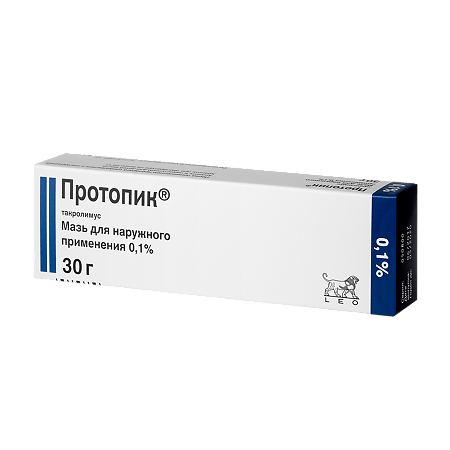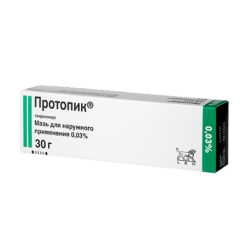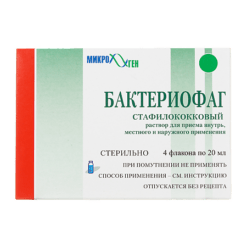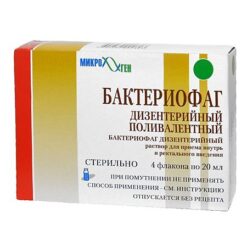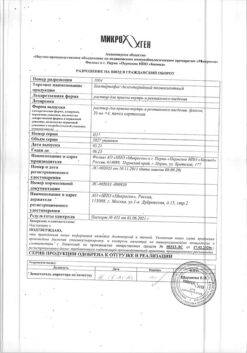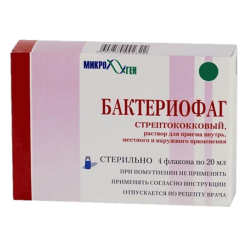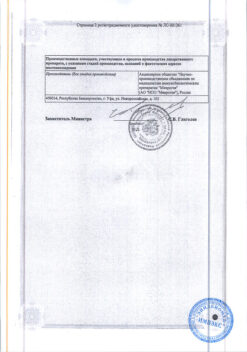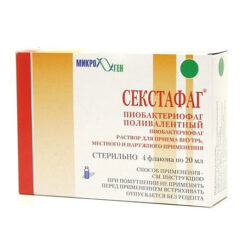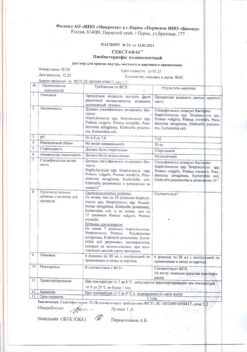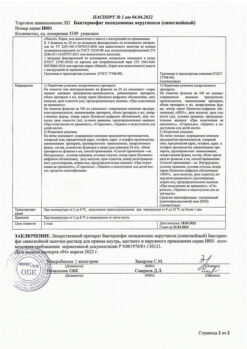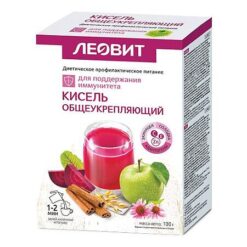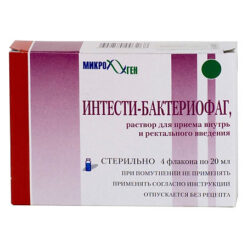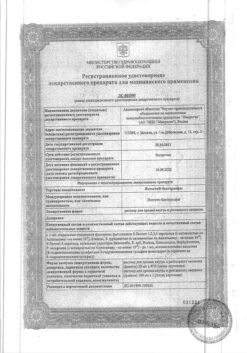No products in the cart.
Protopik 0.1% ointment, 0.1% ointment 30 g
€1.00
Out of stock
(E-mail when Stock is available)
Description
Protopik is a calcineurin inhibitor. The drug binds to the cytoplasmic protein immunophilin, which is a cytosolic receptor for calcineurin. This creates a whole complex that includes tacrolimus, calcium, calcineurin, immunophilin and calmodulin.
This inhibits the phosphatase activity of calcineurin, which prevents dephosphorylation and translocation of the nuclear factor of activated T cells, which is needed to initiate the transcription of genes encoding the production of cytokines important for the T-cell immune response.
The active ingredient of the ointment also inhibits the transcription of genes that encode the production of IL-3, IL-4, IL-5 (cytokines). In addition, it inhibits:
< ul> < li>GMKSF and TNF-α, which are involved in T-lymphocyte activation;
< li>reduction of FcεRI expression on Langerhans cells (leading to a decrease in their activity);
< li>release of inflammatory mediators from mast cells, eosinophils and basophils.
This medication does not cause atrophy of the skin.
< br>.
Indications
Indications
In adults, 0.03% and 0.1% Protopik® ointment is used; in children from 2 to 16 years of age – 0.03% ointment.
The treatment of atopic dermatitis (moderate and severe forms) when patients have insufficient response to traditional methods of treatment or have contraindications to these methods.
Active ingredient
Active ingredient
Composition
Composition
Active substance:
Tacrolimus
Ancillary substances:
Paraffin soft white;
Liquid paraffin;
propylene carbonate;
White beeswax;
solid paraffin
How to take, the dosage
How to take, the dosage
Adults and children over 2 years of age apply Protopik® ointment in a thin layer to the affected areas of the skin. The drug can be used on any part of the body, including the face and neck, in the area of skin folds. It is not recommended to apply the drug to mucous membranes and under occlusive dressings.
In children and teenagers aged from 2 to 16 years old treatment should be started with 0.03% Protopik® 2 ointment. Duration of treatment according to the given scheme should not exceed 3 weeks. Further the frequency of application is decreased to 1 and the treatment is continued till the lesions are completely cleaned up.
In adults and adolescents aged 16 years and older the treatment should be begun with 0.1% Protopik® 2 ointment and continued till the lesions are completely cleaned up. With improvement, it is possible to reduce the frequency of application of 0.1% ointment or switch to 0.03% Protopik® ointment. If symptoms recur, resume treatment with 0.1% ointment 2 If the clinical picture allows, an attempt should be made to reduce the frequency of application of the drug, or to use 0.03% ointment.
Interaction
Interaction
Tacrolimus is not metabolized in the skin, which eliminates the risk of drug interactions in the skin that could affect its metabolism.
Since systemic absorption of tacrolimus when used in the form of ointment is minimal, interactions with CYP3A4 inhibitors (including erythromycin, etraconazole, ketoconazole, diltizam) are unlikely.erythromycin, itraconazole, ketoconazole, diltiazem) when used concomitantly with Protopik® ointment is unlikely, but cannot be completely excluded in patients with extensive lesions and/or erythroderma.
The effect of Protopik® ointment on vaccine efficacy has not been studied. However, because of the potential risk of reduced efficacy, vaccination should be carried out before the start of ointment use or 14 days after the last use of Protopik® ointment.
If a live attenuated vaccine is used, this period should be extended to 28 days, otherwise alternative vaccines should be considered.
The possibility of co-administration of Protopik® ointment with other external medications, systemic GCS and immunosuppressants has not been studied.
Special Instructions
Special Instructions
Protopik® Ointment should not be used in patients with congenital or acquired immunodeficiency or in patients who are taking immunosuppressants.
When using Protopik® ointment, sunlight exposure, visits to a tanning bed, UVB or A light therapy in combination with psoralen (PUVA therapy) should be avoided.
Protopik® ointment should not be used to treat areas of the lesion that are considered to be potentially malignant or precancerous.
The areas of skin where the ointment was applied must not be treated with emollients for 2 hours.
The efficacy and safety of Protopik® ointment in the treatment of infected atopic dermatitis have not been evaluated. If there are signs of infection, appropriate therapy is necessary prior to prescribing Protopik® ointment. Use of Protopik® ointment may be associated with an increased risk of herpetic infection. In the presence of signs of herpetic infection, the benefit-risk ratio of Protopik® use should be individually evaluated.
If lymphadenopathy is present, the patient should be evaluated prior to therapy and monitored during the use of the ointment. If there is no apparent cause of lymphadenopathy or if symptoms of acute infectious mononucleosis are present, the use of Protopik® Ointment should be discontinued.
The ointment should be avoided in the eyes and on the mucous membranes (in cases of accidental contact, the ointment should be carefully removed and/or washed with water).
The application of Protopik® ointment under occlusive dressings and wearing tight, airtight clothing is not recommended.
As with any other topical medication, patients should wash their hands after applying the ointment unless the ointment is applied to the hand area for a therapeutic purpose.
Contraindications
Contraindications
– genetic defects of the epidermal barrier, such as Netherton’s syndrome;
– generalized erythroderma (due to the risk of progressive increase in systemic absorption of tacrolimus);
– pregnancy;
– lactation period (breastfeeding);
– children and adolescents under 16 years of age (for 0.1% ointment);
– childhood under 2 years of age (for 0.03% ointment);
– hypersensitivity to tacrolimus, to the adjuvant substances, to macrolides.
Protopik® should be used with caution in decompensated hepatic insufficiency, with extensive skin lesions, especially with long-term courses and in children.
Side effects
Side effects
The incidence of adverse reactions: very common (>1/10), common (>1/100, 1/1000, Local reactions: very common – burning sensation and itching; common – feeling of heat, redness, pain, irritation, rash at the application site. As a rule, they are moderately expressed and go away within the first week after the start of treatment.
Infections: often – herpetic infection (herpes simplex face and lips, Kaposi varicelliform rash).
Dermatological reactions: often – folliculitis, itching; rarely – acne.
Peripheral nervous system disorders: frequently – paraesthesia, hyperaesthesia.
Others: often – alcohol intolerance (facial hyperemia or symptoms of skin irritation after drinking alcohol).
In the entire period of observation of the drug, single cases of rosacea, malignization (cutaneous and other types of lymphoma, skin cancer) have been reported.
Overdose
Overdose
There have been no cases of overdose when administered externally.
In case of ingestion, common measures should be taken, which include monitoring of vital body functions and observation of the general condition.
Stimulation of vomiting or gastric lavage is not recommended.
Similarities
Similarities
Additional information
| Shelf life | 3 years |
|---|---|
| Conditions of storage | At a temperature not exceeding 25 °C |
| Manufacturer | Netherlands |
| Medication form | topical ointment |
Other forms…
Related products
Buy Protopik 0.1% ointment, 0.1% ointment 30 g with delivery to USA, UK, Europe and over 120 other countries.

